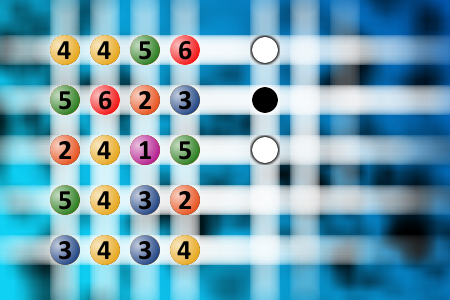Which is a winning combination of digits?
The computer chose a secret code (sequence of 4 digits from 1 to 6). Your goal is to find that code. Black circles indicate the number of hits on the right spot. White circles indicate the number of hits on the wrong spot.
A powerful Emperor advertised for a new Chief Samurai...
LNumber One Samurai, "Demonstrate your skills!" commanded the Emperor.
The Japanese samurai stepped forward, opened a tiny box, and released a fly. He drew his samurai sword and "swish"; the fly fell to the floor, neatly divided in two!
"What a feat!" said the Emperor. "Number Two Samurai, show me what you can do."
The Chinese samurai smiled confidently, stepped forward and opened a tiny box, releasing a fly. He drew his samurai sword and "swish, swish"; the fly fell to the floor, neatly quartered!
"That is skill!" nodded the Emperor. "How are you going to top that, Number Three Samurai?" Number Three Samurai stepped forward, opened a tiny box, release one fly, drew his Samurai sword, and "swoooooosh" flourished his sword so mightily that a gust of wind blew through the room. But the fly was still buzzing around!
In disappointment, the Emperor said, "What kind of skill is that? The fly isn't even dead."
"Dead, schmed," replied the Jewish Samurai. "Dead is easy. What takes REAL skill is circumcision"

